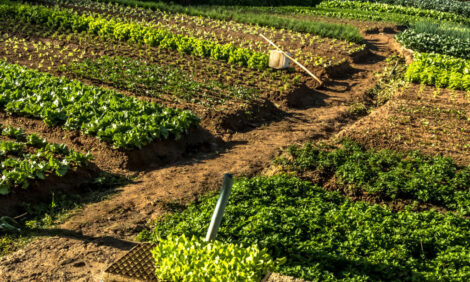



Understanding Energy and Protein
By Livestock Knowledge Transfer, UK - This article is the first in the series from "Getting the best from your pigs" and looks at the basic energy and amino acid requirements for your pigs correct diet.
No. 1 Understanding Energy and Protein
Feeds contain many different classes of nutrients which are needed by pigs for maintenance and growth. The major nutrients are energy and protein, whilst others, e.g. minerals and vitamins are needed in very small quantities. The energy in the diet can be thought of as the fuel source for the body whilst the protein is the material for building the muscle tissue i.e. lean meat.
ENERGY
- Measured as mega joules of digestible energy - MJ/kg DE
- Can be derived from protein, fat or carbohydrate in the diet
- In general, cereals and fats are considered to be the energy components of the diet
- Required for body processes e.g. breathing and digestion and to build up muscle from dietary protein
- Excess to the requirement for these processes is stored as fat
PROTEIN
- Measured as a % or as grams of crude protein - % CP or g/kg CP
- Derived mainly from oilseeds e.g. soya, rape, sunflower, also from peas, beans, fishmeal and cereals
- Comprised of building blocks called amino acids (AA), e.g. lysine, which also form the
foundation of the muscle tissue
- Excess AA are not stored in the body but excreted via the kidneys as nitrogen compounds
- The feeding of animal protein with the exception of fishmeal and milk protein is banned in the UK
Typical DE, CP and Lysine contents of raw materials
| Diet | DE MJ/Kg | CP % | Lysine g/Kg |
| Barley | 14.5 | 12.3 | 4.2 |
| Wheat | 16.0 | 13.0 | 3.5 |
| Soyabean meal | 15.7 | 51.0 | 33.0 |
| Rapeseed meal | 12.0 | 38.5 | 21.0 |
| Fishmeal | 17.0 | 73.0 | 55.0 |
| Beans | 15.8 | 29.0 | 19.5 |
AMINO ACIDS
- 22 different amino acids
- 11 are essential (EAA) i.e. cannot be manufactured by the body and must be derived from the diet
- 11 are non-essential (NEAA) i.e. can be made by the body
- The profile of amino acids in a protein give it its individuality e.g. milk, egg, meat or vegetable protein
- Ideal Protein (IP) is a protein which has the desired ratio of EAA to each other and to the NEAA
- The nearer the EAA composition of the diet is to IP, the more efficiently the diet is utilised and the lower the level of nitrogen excretion
LYSINE
- The most important EAA which is usually the first limiting AA and the one you should look out for
- The level in the diet normally determines the use that can be made of the other EAA
- The level of CP in a diet is a much less reliable indicator of the dietary nutrient quality
DE to Lysine Ratio
- It is important to have the correct amount of energy in the diet to fuel the build up of muscle tissue
- Too much energy in relation to lysine will lead to a fat carcass
- Too little energy in relation to lysine will result in reduced muscle growth and a waste of the protein
- The right ratio in the diet will optimise pig performance
Matching diets for your pigs
The optimum DE to lysine ratio is not an absolute value but varies according to factors such as
- Genotype
- Sex
- Health status
- Pen environment
Typical levels of DE and Lysine in commercial diets
| Diet | DE MJ/Kg | Lysine g/Kg | Lysine : DE |
| Creep | 16.0 - 16.7 | 15 - 17 | 0.94 - 1.02 |
| Weaner | 15.0 - 15.7 | 14 - 16 | 0.93 - 1.02 |
| Starter | 14.4 - 14.7 | 13 - 14 | 0.90 - 0.95 |
| Grower | 14.2 - 14.5 | 12 - 13 | 0.85 - 0.90 |
| Finisher | 13.7 - 14.1 | 10 - 12 | 0.73 - 0.85 |
| Gilt rearer | 13.5 - 13.7 | 8 - 9 | 0.59 - 0.67 |
| Dry Sow | 13.0 - 13.2 | 5 - 6 | 0.38 - 0.45 |
| Lactating Sow | 13.5 - 14.0 | 8- 9 | 0.59 - 0.64 |

Source: Livestock Knowledge Transfer - First published 2001. Added to this site 2003.






